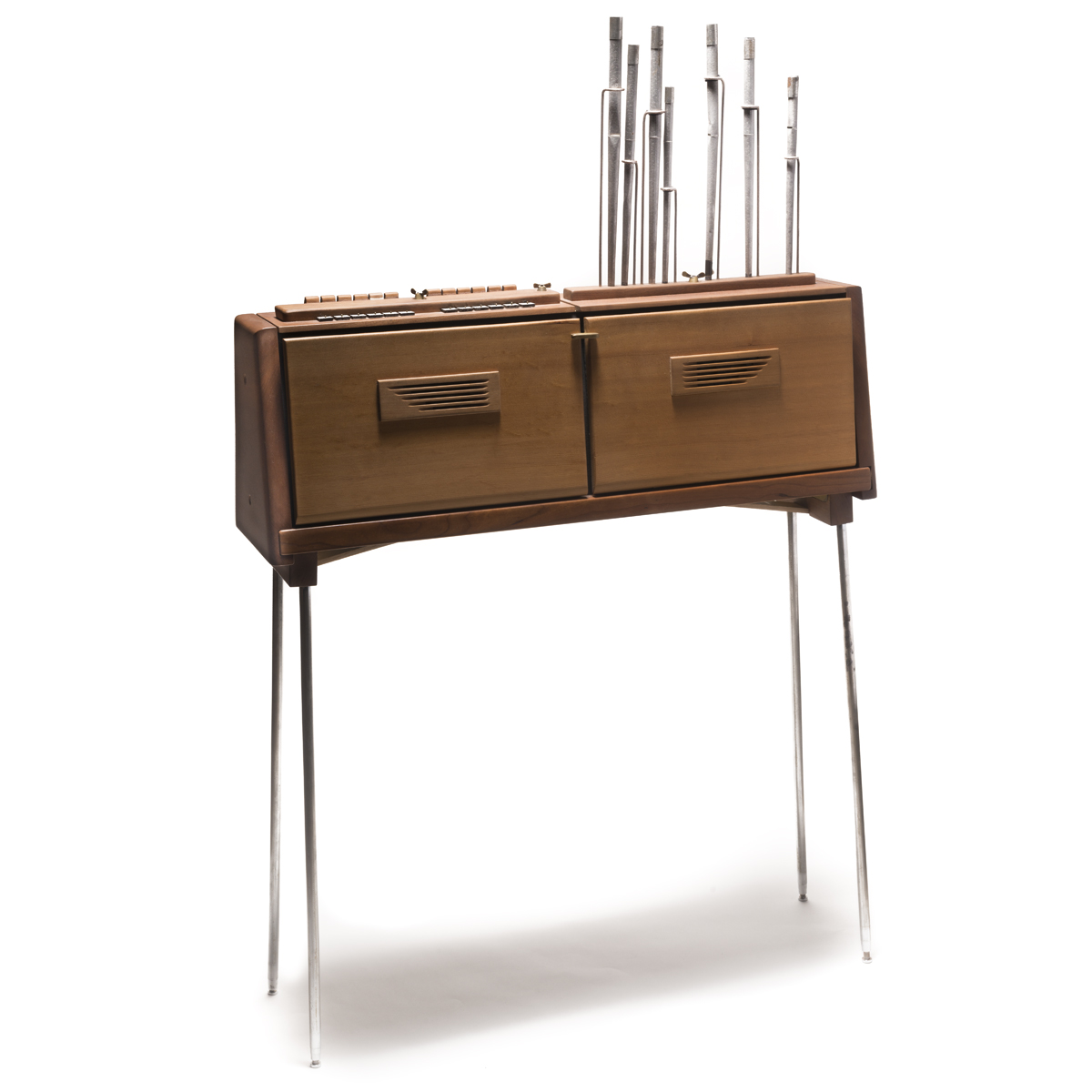Andrew Furse’s Apiary
2011
The Apiary was designed and constructed for Coppice by Andrew Furse in 2011. It is heard in the compositions Snow (2011) , A Vinculum Variation (2012), and in the sound installation Droopy (2013).
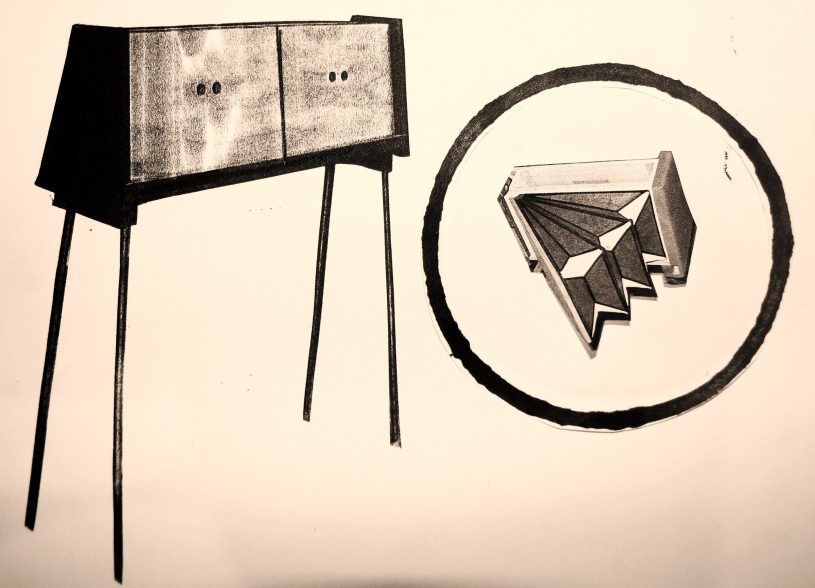
The Apiary is a double-feeder, double bellows free-reed aerophone. It contains two independent/identical air reservoirs with interchangeable reed-board tops. Sounds are obtained by opening small wooden slides that cover holes directly above block-mounted reeds. The feeder bellows are hand pumped and fill opposing wedge-shaped reservoirs pressurized by spring force. The air chest constitutes a near entirety of the instrument where all bellows and reed-boards are mounted. Folding legs allow the Apiary to be easily transported and played either sitting or standing.
The air chest is trapezoidal in shape and made of ½“ birch ply. It measures 24” X 7” and has an internal cavity dimension of 2 ½” to 5 ½” tapering upward. The total cavity size is split in half with an internal wooden partition.
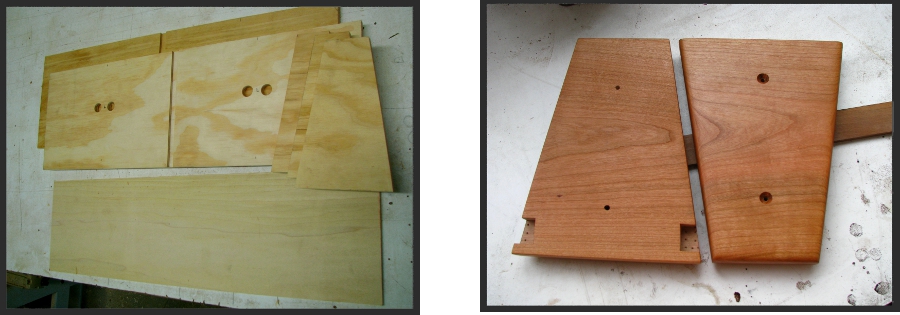
The top remains open where reed-boards are attached to cleats set 1/16th bellow the top of the air chest. A total of eight holes, 7/8ths” diameter were bored on the vertical boards of the chest; 2 per half, per side allowing outside communication between feeder bellows, etc. Folding legs are mounted to the bottom of the chest and 1” thick cheeks were made from Cherry wood and screwed to the sides of the air chest.
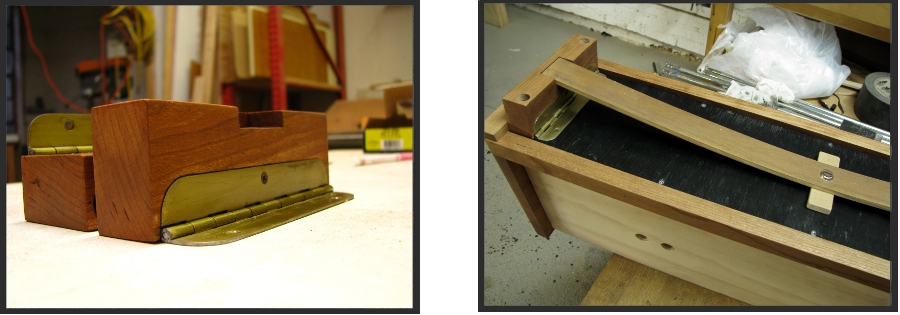
The feeders are approximately 1/3 the volume of the reservoirs and have a moderately thick spring to pressurize air. With the reservoirs designed to open approximately 12 inches; the physical travel of motion of (up to) 12 inches allow the spring a larger differential and create a range of “pressure circumstances”. At best, this allows a more controllable attack with regards to sounding a reed, pipe, air filter, etc.
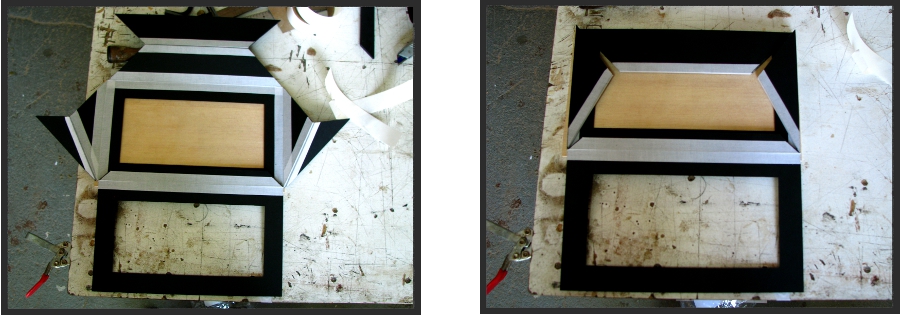
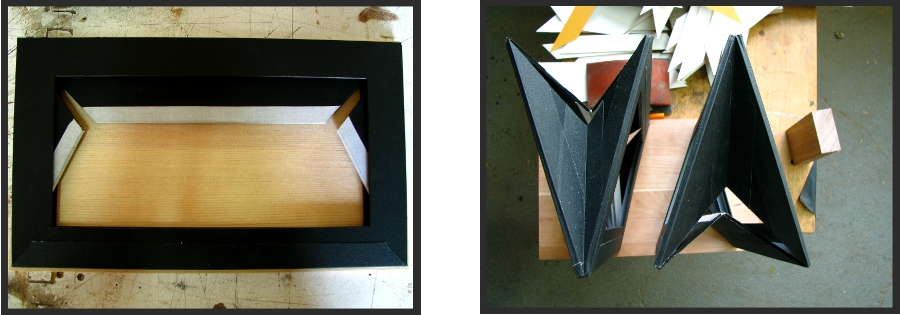
The bellows were cut from thick backing board and hinged with linen and medium thick bookbinders spine tapes. Kangaroo leather was used for the corner gussets with linen finishing tapes applied to creases.
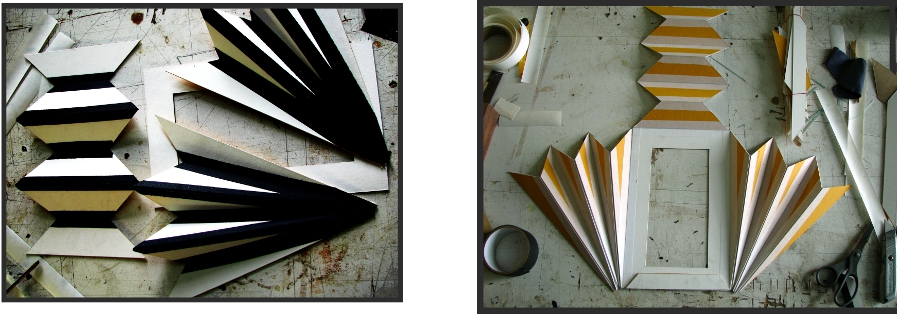
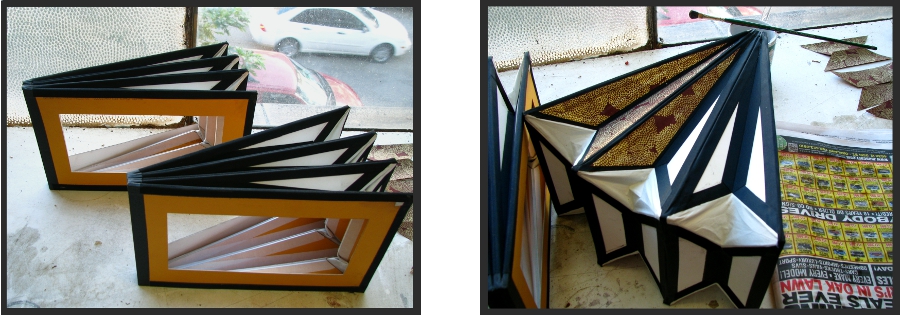

The bellows were built as units and glued to the air chest. ¼” thick , quarter sawn spruce and cherry were prepared and two, 3/8” air-intake holes were drilled in the spruce with ¼ inch space between. The planed cherry boards, ¼“ thick are glued directly to a triple-fold reservoir bellows and remain air-tight and without any holes.
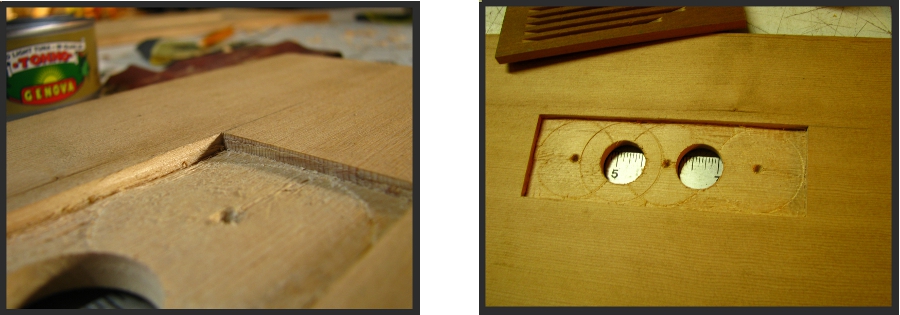
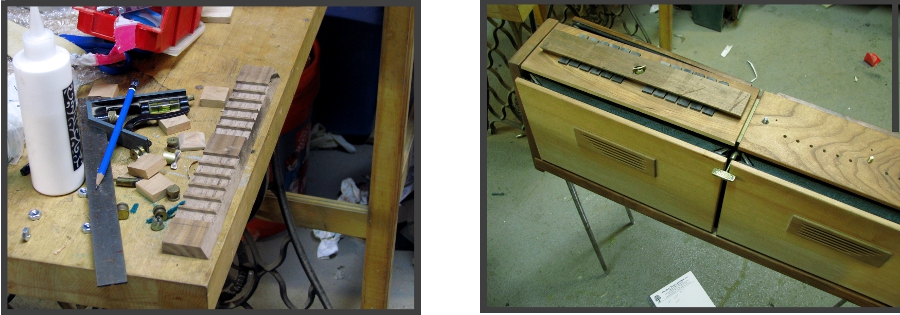
A small decorative grill was carved from Sapele and inset on the spruce feeders glued to bi-fold bellows. Split, double buffed suede check valves were cut 2 ¼ x 1 ¼“ and installed prior to final gluing. Similar suede strips are used for gasketing between the top of the chest and reed-board.
Reed boards are completely modular and any combination using two may be experimented with.
